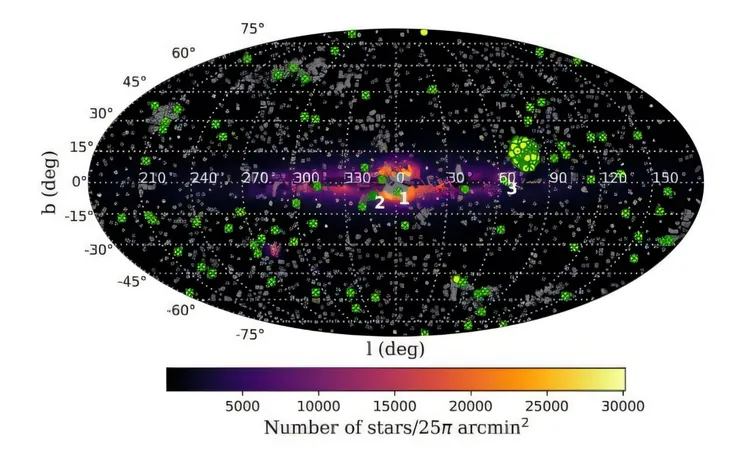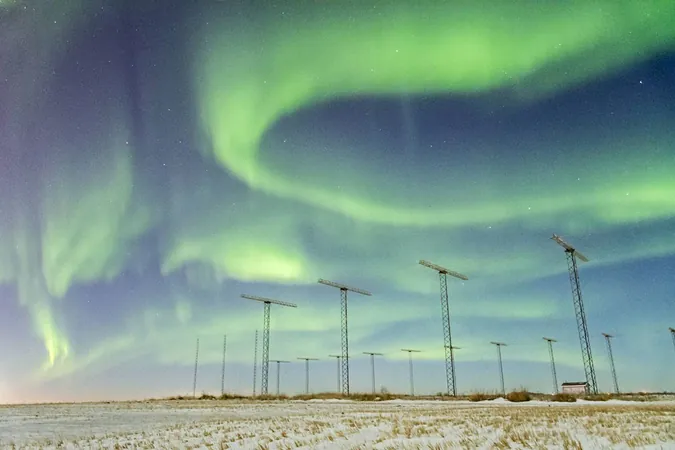
The Hidden Dangers of Stellar Environments: How They Influence Exoplanet Habitability
2024-11-06
Author: Noah
When exploring the cosmos for exoplanets that can host life, scientists hone in on the concept of the habitable zone (HZ). This zone encompasses the region surrounding a star where conditions are just right for liquid water to exist on the surface of a planet, a fundamental requirement for life as we know it. While identifying habitable zones is a crucial first step in the search for extraterrestrial life, the reality is far more complex.
Recent studies have illuminated the myriad threats that exoplanets in habitable zones may face, particularly in high-density stellar environments. Stellar events like supernovae and close stellar encounters from neighboring stars pose significant risks, potentially ejecting these planets from their solar systems or even obliterating their atmospheres.
A groundbreaking study, titled "The 10 pc Neighborhood of Habitable Zone Exoplanetary Systems: Threat Assessment from Stellar Encounters & Supernovae," has been accepted for publication in *The Astronomical Journal* and offers deep insights into these dangers. Led by Tisyagupta Pyne from the Integrated Science Education and Research Center at Visva-Bharati University in India, the research analyzes the proximity of 84 solar systems with known habitable zone exoplanets, probing how external stellar threats alter our perceptions of habitability.
Currently, over 150 confirmed exoplanets inhabit these habitable zones, with scientists stratifying potential habitability into two distinct categories: the "optimistic habitable zone" and the "conservative habitable zone." The former suggests regions that receive lower radiation than Venus did a billion years ago and more than Mars did 3.8 billion years ago; the latter is a narrower band, mapping true conditions where liquid water could genuinely persist.
However, the stellar environment plays a pivotal role as well. As stars undergo varied behaviors and dynamics, the threat they impose on life-sustaining planets can become increasingly evident. The research introduces two novel metrics, the Solar Similarity Index (SSI) and the Neighborhood Similarity Index (NSI), highlighting how different stellar environments enhance or diminish the chances for life. The SSI compares solar properties to those of other habitable systems, while the NSI evaluates nearby stellar environments.
One major takeaway from the research is the idea that while an exoplanet may sit comfortably in a habitable zone, its surroundings significantly impact its long-term habitability. Disastrous events, such as supernovae within a 50-light-year distance, can unleash lethal radiation and high-energy particles, jeopardizing any potential life forms. The study noted the existence of high-mass stars within 10 parsecs of habitable systems, which could become supernovae, posing further threat.
For instance, out of the exoplanetary systems studied, only one—HD 165155—emerged as particularly vulnerable to stellar flybys, with an encounter probability exceeding 1 in 5 billion years. Such disruptions can threaten the orbits of planets within their habitable zones, increasing their risk of being ejected into the vastness of space.
The findings reiterate that despite technological advancements in exoplanet research, the potential dangers from surrounding stellar conditions can quite literally shatter the dreams of finding long-lasting life elsewhere.
As we advance into an era of ever more sophisticated telescopes, like the forthcoming Nancy Grace Roman Space Telescope, our understanding of these stellar environments will continue to expand, revealing how extensive and varied life-sustaining conditions could be throughout our galaxy.
Ultimately, this research serves as a reminder: the habitable zones around stars are only part of the story; the cosmic neighborhood surrounding them might hold the key to understanding the potential for life. The path to unraveling the secrets of life beyond Earth is fraught with challenges, but with each discovery, we move closer to understanding our dazzling universe and our place within it. Buckle up, because the quest to find life beyond our planet is just beginning, and the revelation of what lies ahead may be more astonishing than we ever imagined!









 Brasil (PT)
Brasil (PT)
 Canada (EN)
Canada (EN)
 Chile (ES)
Chile (ES)
 España (ES)
España (ES)
 France (FR)
France (FR)
 Hong Kong (EN)
Hong Kong (EN)
 Italia (IT)
Italia (IT)
 日本 (JA)
日本 (JA)
 Magyarország (HU)
Magyarország (HU)
 Norge (NO)
Norge (NO)
 Polska (PL)
Polska (PL)
 Schweiz (DE)
Schweiz (DE)
 Singapore (EN)
Singapore (EN)
 Sverige (SV)
Sverige (SV)
 Suomi (FI)
Suomi (FI)
 Türkiye (TR)
Türkiye (TR)